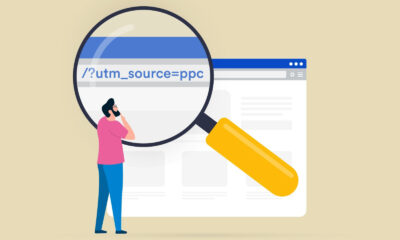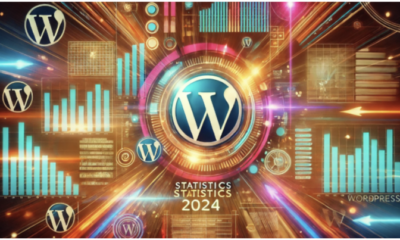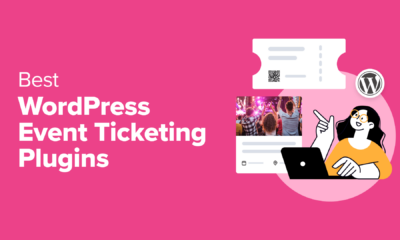SEO
Google Quietly Ends Covid-Era Rich Results

Google removed the Covid-era structured data associated with the Home Activities rich results that allowed online events to be surfaced in search since August 2020, publishing a mention of the removal in the search documentation changelog.
Home Activities Rich Results
The structured data for the Home Activities rich results allowed providers of online livestreams, pre-recorded events and online events to be findable in Google Search.
The original documentation has been completely removed from the Google Search Central webpages and now redirects to a changelog notation that explains that the Home Activity rich results is no longer available for display.
The original purpose was to allow people to discover things to do from home while in quarantine, particularly online classes and events. Google’s rich results surfaced details of how to watch, description of the activities and registration information.
Providers of online events were required to use Event or Video structured data. Publishers and businesses who have this kind of structured data should be aware that this kind of rich result is no longer surfaced but it’s not necessary to remove the structured data if it’s a burden, it’s not going to hurt anything to publish structured data that isn’t used for rich results.
The changelog for Google’s official documentation explains:
“Removing home activity documentation
What: Removed documentation on home activity structured data.Why: The home activity feature no longer appears in Google Search results.”
Read more about Google’s Home Activities rich results:
Google Announces Home Activities Rich Results
Read the Wayback Machine’s archive of Google’s original announcement from 2020:
Featured Image by Shutterstock/Olga Strel
SEO
Boost Your Local SEO with the Google Local Guide Program

If you manage a Google my Business account, you may have seen a few reviews from users with a star symbol right by their name – and you may have even noticed the title “Local Guide.” This is a feature called the Google Local Guide Program, and it’s something your business can tap into.
What is the Google Local Guide Program?
The Google Local Guide program is an initiative by Google, designed to incentivize users into contributing information about local businesses, attractions, and places they’ve visited and engaged with.
Users who participate in this program are called Local Guides, and they’re users who actively share the knowledge and experiences they’ve had with local businesses. They also engage with other users by answering questions about various locations on Google Maps.
It’s made to improve the accuracy of business information other people can find through GMB and Google Maps, and also so that other users can see first-hand accounts of what a local business is like.
Local Guides earn points for their work – the more they contribute, the higher their level becomes within the program. High level contributors are rewarded with benefits and perks, like early access to new Google features, exclusive events, and special promotions.
How You Become a Local Guide?
Here’s the good news: anyone with a Google account can become a Local Guide. You just need to sign up. But keep in mind that this program is only open for individual users, and you cannot sign up using a business account.
Start by opening Google Maps either on desktop or on your mobile app. Then, tap on the three horizontal lines on the top-left corner to open the user menu.
Scroll down the menu until you see the option “Your contributions.” Click on that, then click on “Join Local Guides.” This starts the application process, which can be finished in minutes.
You can also sign up for the program through the official Local Guides link.
Google’s Local Guide System
There’s tons of ways to earn points in the Google Local Guide program, and a tier system which unlocks new benefits for users. All users have to do is keep contributing, and the amount of points they earn is already set per contribution type:
- Review: 10 points per review. If the review is more than 200 characters long, there is an extra 10 points.
- Rating: 1 point per business or location rating.
- Photo: 5 points per photo. Multiple photos uploaded per business or location will lead to multiplied points.
- Photo tags: 3 points per tag.
- Video: 7 points per video. Multiple videos uploaded per business or location will lead to multiplied points.
- Captions added to photo updates: 10 points per caption
- Answer: 1 point per answer.
- Respond to Q&As: 3 points per response.
- Edit: 5 points per edit to a business or location listing.
- Place added: 15 points per place added.
- Road added: 15 points per road added.
- Fact checked: 1 point per checked fact.
Each contribution does go through a review and verification process, so earning points doesn’t happen immediately.
As users earn points, they also level up. Levels in the Google Local Guide program go from 1 to 10, with higher levels having more benefits. At level 4, users earn a “Local Guides” badge, which is the star icon you may have seen by some user’s names before.
How the Local Guide Program Affects Your Local SEO
Google Local Guides push users to keep contributing to listings on Google My Business, and locations on Google Maps. This makes both platforms, which are very useful ways to discover local businesses, work better.
If you want your Google My Business profile to outrank your competitors, then you need to tap into the Local Guide Program, and make sure your profile is comprehensive, helpful, and engaging to users.
Because Local Guide reviews tend to show up at the top of your business reviews, they will be the most viewed parts of your profile. Plus, reviews from these users tend to be longer, more detailed, and with photos and/or videos attached to them, since this earns them more points. Getting impressive reviews from these users is a great way to boost your brand’s reputation online.
Plus, whether they leave a review, photo update, an answer in your Q&A section, contributions from a Local Guide will positively impact your business locations’ local SEO performance. The more contributions you get from them, the more detailed your business profile will be, and the more likely it is that you rank higher in local search results.
Author’s Note: If you haven’t created your business’ profile yet, follow my guide to setting up a Google My Business Account. I also have another guide to local link building strategies you can follow to level-up your local search visibility.
How to Use the Local Guide Program to Improve Your Local SEO
The amount of reviews you get from local Guides can work in your favor, and boost your online reputation – a must for brand recognition and improving your rankings. Here are some of the ways I have encouraged more and more reviews from Local Guides:
Keep Your Google My Business Profile Updated
Be sure that Google My Business has all the information a user needs to know about your business. Aside from the basics, such as your address and operating hours, consider if they need to know what kind of facilities you have at your location, additional services you provide, links to your menu and social media profiles, and so on.
Make it a point to review and update your profile every so often as your business grows. The more descriptive your Google My Business profile is, the more likely you are to be discovered and reviewed by other users (Local Guides included).
Respond to Your Reviews–Even the Bad Ones
Customers, in general, want to feel that businesses care about their experience–which makes responding to their reviews a must. BrightLocal’s survey on customer reviews shows findings which should really drive this point home:
- “89% of consumers would be ‘likely’ or ‘highly likely’ to use businesses that respond to all reviews”
- “59% of users said they are fairly likely to use a business that responds to all reviews”
- “52% said they would use a business if a merchant responded to only negative reviews”
- “22% say they’re ‘not likely at all’ to use businesses that don’t respond to any reviews”
So yes, you should reply to all the reviews on your profile, even the bad ones. It will show future customers who look you up online that you do care about their experience.
Don’t Buy Reviews
It might be tempting to reach out to Local Guides and incentivize them to leave a review or contribution to your Google My Business profile, but it’s something I strongly do not recommend. The best engagement happens organically – plus, buying reviews violates Google’s review policy.
Instead, encourage engagement with your profile by adding its link to your other platforms and focus on building up an authentic relationship with your customers.
Use Feedback for Insights
Local Guides are more likely to come back and continue engaging with your business if you’re using their feedback to improve your business. Don’t ignore reviews from other customers either – each contribution will give you valuable insights on your customer experience.
So reply and thank them for their feedback, and take note of any actionable points that they provide in their comments.
Key Takeaway
Understanding the Local Guide Program and how it affects your business is crucial if you’re working on improving your presence online. Remember, brand reputation and SEO go hand-in-hand. When a trusted source like them engages with your Google my Business, it doesn’t just boost your online credibility within your industry, it’ll also benefit your ranking on the search results.
Having a solid plan for responding to and generating reviews not only helps retain existing customers but also attracts new ones. Use this guide to build up social proof, increase customer engagement and experience, catch the attention of Local Guides, and ultimately climb up local search results.
SEO
Google Revamps Entire Crawler Documentation

Google has launched a major revamp of its Crawler documentation, shrinking the main overview page and splitting content into three new, more focused pages. Although the changelog downplays the changes there is an entirely new section and basically a rewrite of the entire crawler overview page. The additional pages allows Google to increase the information density of all the crawler pages and improves topical coverage.
What Changed?
Google’s documentation changelog notes two changes but there is actually a lot more.
Here are some of the changes:
- Added an updated user agent string for the GoogleProducer crawler
- Added content encoding information
- Added a new section about technical properties
The technical properties section contains entirely new information that didn’t previously exist. There are no changes to the crawler behavior, but by creating three topically specific pages Google is able to add more information to the crawler overview page while simultaneously making it smaller.
This is the new information about content encoding (compression):
“Google’s crawlers and fetchers support the following content encodings (compressions): gzip, deflate, and Brotli (br). The content encodings supported by each Google user agent is advertised in the Accept-Encoding header of each request they make. For example, Accept-Encoding: gzip, deflate, br.”
There is additional information about crawling over HTTP/1.1 and HTTP/2, plus a statement about their goal being to crawl as many pages as possible without impacting the website server.
What Is The Goal Of The Revamp?
The change to the documentation was due to the fact that the overview page had become large. Additional crawler information would make the overview page even larger. A decision was made to break the page into three subtopics so that the specific crawler content could continue to grow and making room for more general information on the overviews page. Spinning off subtopics into their own pages is a brilliant solution to the problem of how best to serve users.
This is how the documentation changelog explains the change:
“The documentation grew very long which limited our ability to extend the content about our crawlers and user-triggered fetchers.
…Reorganized the documentation for Google’s crawlers and user-triggered fetchers. We also added explicit notes about what product each crawler affects, and added a robots.txt snippet for each crawler to demonstrate how to use the user agent tokens. There were no meaningful changes to the content otherwise.”
The changelog downplays the changes by describing them as a reorganization because the crawler overview is substantially rewritten, in addition to the creation of three brand new pages.
While the content remains substantially the same, the division of it into sub-topics makes it easier for Google to add more content to the new pages without continuing to grow the original page. The original page, called Overview of Google crawlers and fetchers (user agents), is now truly an overview with more granular content moved to standalone pages.
Google published three new pages:
- Common crawlers
- Special-case crawlers
- User-triggered fetchers
1. Common Crawlers
As it says on the title, these are common crawlers, some of which are associated with GoogleBot, including the Google-InspectionTool, which uses the GoogleBot user agent. All of the bots listed on this page obey the robots.txt rules.
These are the documented Google crawlers:
- Googlebot
- Googlebot Image
- Googlebot Video
- Googlebot News
- Google StoreBot
- Google-InspectionTool
- GoogleOther
- GoogleOther-Image
- GoogleOther-Video
- Google-CloudVertexBot
- Google-Extended
3. Special-Case Crawlers
These are crawlers that are associated with specific products and are crawled by agreement with users of those products and operate from IP addresses that are distinct from the GoogleBot crawler IP addresses.
List of Special-Case Crawlers:
- AdSense
User Agent for Robots.txt: Mediapartners-Google - AdsBot
User Agent for Robots.txt: AdsBot-Google - AdsBot Mobile Web
User Agent for Robots.txt: AdsBot-Google-Mobile - APIs-Google
User Agent for Robots.txt: APIs-Google - Google-Safety
User Agent for Robots.txt: Google-Safety
3. User-Triggered Fetchers
The User-triggered Fetchers page covers bots that are activated by user request, explained like this:
“User-triggered fetchers are initiated by users to perform a fetching function within a Google product. For example, Google Site Verifier acts on a user’s request, or a site hosted on Google Cloud (GCP) has a feature that allows the site’s users to retrieve an external RSS feed. Because the fetch was requested by a user, these fetchers generally ignore robots.txt rules. The general technical properties of Google’s crawlers also apply to the user-triggered fetchers.”
The documentation covers the following bots:
- Feedfetcher
- Google Publisher Center
- Google Read Aloud
- Google Site Verifier
Takeaway:
Google’s crawler overview page became overly comprehensive and possibly less useful because people don’t always need a comprehensive page, they’re just interested in specific information. The overview page is less specific but also easier to understand. It now serves as an entry point where users can drill down to more specific subtopics related to the three kinds of crawlers.
This change offers insights into how to freshen up a page that might be underperforming because it has become too comprehensive. Breaking out a comprehensive page into standalone pages allows the subtopics to address specific users needs and possibly make them more useful should they rank in the search results.
I would not say that the change reflects anything in Google’s algorithm, it only reflects how Google updated their documentation to make it more useful and set it up for adding even more information.
Read Google’s New Documentation
Overview of Google crawlers and fetchers (user agents)
List of Google’s common crawlers
List of Google’s special-case crawlers
List of Google user-triggered fetchers
See also:
Featured Image by Shutterstock/Cast Of Thousands
SEO
Client-Side Vs. Server-Side Rendering

Faster webpage loading times play a big part in user experience and SEO, with page load speed a key determining factor for Google’s algorithm.
A front-end web developer must decide the best way to render a website so it delivers a fast experience and dynamic content.
Two popular rendering methods include client-side rendering (CSR) and server-side rendering (SSR).
All websites have different requirements, so understanding the difference between client-side and server-side rendering can help you render your website to match your business goals.
Google & JavaScript
Google has extensive documentation on how it handles JavaScript, and Googlers offer insights and answer JavaScript questions regularly through various formats – both official and unofficial.
For example, in a Search Off The Record podcast, it was discussed that Google renders all pages for Search, including JavaScript-heavy ones.
This sparked a substantial conversation on LinkedIn, and another couple of takeaways from both the podcast and proceeding discussions are that:
- Google doesn’t track how expensive it is to render specific pages.
- Google renders all pages to see content – regardless if it uses JavaScript or not.
The conversation as a whole has helped to dispel many myths and misconceptions about how Google might have approached JavaScript and allocated resources.
Martin Splitt’s full comment on LinkedIn covering this was:
“We don’t keep track of “how expensive was this page for us?” or something. We know that a substantial part of the web uses JavaScript to add, remove, change content on web pages. We just have to render, to see it all. It doesn’t really matter if a page does or does not use JavaScript, because we can only be reasonably sure to see all content once it’s rendered.”
Martin also confirmed a queue and potential delay between crawling and indexing, but not just because something is JavaScript or not, and it’s not an “opaque” issue that the presence of JavaScript is the root cause of URLs not being indexed.
General JavaScript Best Practices
Before we get into the client-side versus server-side debate, it’s important that we also follow general best practices for either of these approaches to work:
- Don’t block JavaScript resources through Robots.txt or server rules.
- Avoid render blocking.
- Avoid injecting JavaScript in the DOM.
What Is Client-Side Rendering, And How Does It Work?
Client-side rendering is a relatively new approach to rendering websites.
It became popular when JavaScript libraries started integrating it, with Angular and React.js being some of the best examples of libraries used in this type of rendering.
It works by rendering a website’s JavaScript in your browser rather than on the server.
The server responds with a bare-bones HTML document containing the JS files instead of getting all the content from the HTML document.
While the initial upload time is a bit slow, the subsequent page loads will be rapid as they aren’t reliant on a different HTML page per route.
From managing logic to retrieving data from an API, client-rendered sites do everything “independently.” The page is available after the code is executed because every page the user visits and its corresponding URL are created dynamically.
The CSR process is as follows:
- The user enters the URL they wish to visit in the address bar.
- A data request is sent to the server at the specified URL.
- On the client’s first request for the site, the server delivers the static files (CSS and HTML) to the client’s browser.
- The client browser will download the HTML content first, followed by JavaScript. These HTML files connect the JavaScript, starting the loading process by displaying loading symbols the developer defines to the user. At this stage, the website is still not visible to the user.
- After the JavaScript is downloaded, content is dynamically generated on the client’s browser.
- The web content becomes visible as the client navigates and interacts with the website.
What Is Server-Side Rendering, And How Does It Work?
Server-side rendering is the more common technique for displaying information on a screen.
The web browser submits a request for information from the server, fetching user-specific data to populate and sending a fully rendered HTML page to the client.
Every time the user visits a new page on the site, the server will repeat the entire process.
Here’s how the SSR process goes step-by-step:
- The user enters the URL they wish to visit in the address bar.
- The server serves a ready-to-be-rendered HTML response to the browser.
- The browser renders the page (now viewable) and downloads JavaScript.
- The browser executes React, thus making the page interactable.
What Are The Differences Between Client-Side And Server-Side Rendering?
The main difference between these two rendering approaches is in the algorithms of their operation. CSR shows an empty page before loading, while SSR displays a fully-rendered HTML page on the first load.
This gives server-side rendering a speed advantage over client-side rendering, as the browser doesn’t need to process large JavaScript files. Content is often visible within a couple of milliseconds.
Search engines can crawl the site for better SEO, making it easy to index your webpages. This readability in the form of text is precisely the way SSR sites appear in the browser.
However, client-side rendering is a cheaper option for website owners.
It relieves the load on your servers, passing the responsibility of rendering to the client (the bot or user trying to view your page). It also offers rich site interactions by providing fast website interaction after the initial load.
Fewer HTTP requests are made to the server with CSR, unlike in SSR, where each page is rendered from scratch, resulting in a slower transition between pages.
SSR can also buckle under a high server load if the server receives many simultaneous requests from different users.
The drawback of CSR is the longer initial loading time. This can impact SEO; crawlers might not wait for the content to load and exit the site.
This two-phased approach raises the possibility of seeing empty content on your page by missing JavaScript content after first crawling and indexing the HTML of a page. Remember that, in most cases, CSR requires an external library.
When To Use Server-Side Rendering
If you want to improve your Google visibility and rank high in the search engine results pages (SERPs), server-side rendering is the number one choice.
E-learning websites, online marketplaces, and applications with a straightforward user interface with fewer pages, features, and dynamic data all benefit from this type of rendering.
When To Use Client-Side Rendering
Client-side rendering is usually paired with dynamic web apps like social networks or online messengers. This is because these apps’ information constantly changes and must deal with large and dynamic data to perform fast updates to meet user demand.
The focus here is on a rich site with many users, prioritizing the user experience over SEO.
Which Is Better: Server-Side Or Client-Side Rendering?
When determining which approach is best, you need to not only take into consideration your SEO needs but also how the website works for users and delivers value.
Think about your project and how your chosen rendering will impact your position in the SERPs and your website’s user experience.
Generally, CSR is better for dynamic websites, while SSR is best suited for static websites.
Content Refresh Frequency
Websites that feature highly dynamic information, such as gambling or FOREX websites, update their content every second, meaning you’d likely choose CSR over SSR in this scenario – or choose to use CSR for specific landing pages and not all pages, depending on your user acquisition strategy.
SSR is more effective if your site’s content doesn’t require much user interaction. It positively influences accessibility, page load times, SEO, and social media support.
On the other hand, CSR is excellent for providing cost-effective rendering for web applications, and it’s easier to build and maintain; it’s better for First Input Delay (FID).
Another CSR consideration is that meta tags (description, title), canonical URLs, and Hreflang tags should be rendered server-side or presented in the initial HTML response for the crawlers to identify them as soon as possible, and not only appear in the rendered HTML.
Platform Considerations
CSR technology tends to be more expensive to maintain because the hourly rate for developers skilled in React.js or Node.js is generally higher than that for PHP or WordPress developers.
Additionally, there are fewer ready-made plugins or out-of-the-box solutions available for CSR frameworks compared to the larger plugin ecosystem that WordPress users have access too.
For those considering a headless WordPress setup, such as using Frontity, it’s important to note that you’ll need to hire both React.js developers and PHP developers.
This is because headless WordPress relies on React.js for the front end while still requiring PHP for the back end.
It’s important to remember that not all WordPress plugins are compatible with headless setups, which could limit functionality or require additional custom development.
Website Functionality & Purpose
Sometimes, you don’t have to choose between the two as hybrid solutions are available. Both SSR and CSR can be implemented within a single website or webpage.
For example, in an online marketplace, pages with product descriptions can be rendered on the server, as they are static and need to be easily indexed by search engines.
Staying with ecommerce, if you have high levels of personalization for users on a number of pages, you won’t be able to SSR render the content for bots, so you will need to define some form of default content for Googlebot which crawls cookieless and stateless.
Pages like user accounts don’t need to be ranked in the search engine results pages (SERPs), so a CRS approach might be better for UX.
Both CSR and SSR are popular approaches to rendering websites. You and your team need to make this decision at the initial stage of product development.
More resources:
Featured Image: TippaPatt/Shutterstock
-
SEARCHENGINES7 days ago
Daily Search Forum Recap: September 13, 2024
-

 SEO5 days ago
SEO5 days ago9 HTML Tags (& 11 Attributes) You Must Know for SEO
-

 SEO6 days ago
SEO6 days agoThe Expert SEO Guide To URL Parameter Handling
-

 SEARCHENGINES6 days ago
SEARCHENGINES6 days agoGoogle Ranking Volatility, Apple Intelligence, Navboost, Ads, Bing & Local
-

 WORDPRESS6 days ago
WORDPRESS6 days ago20 Must-Know WordPress Stats Defining the Leading Platform in 2024
-

 WORDPRESS6 days ago
WORDPRESS6 days ago7 Best WordPress Event Ticketing Plugins for 2024 (Tested)
-
SEARCHENGINES4 days ago
Daily Search Forum Recap: September 16, 2024
-
SEARCHENGINES3 days ago
Daily Search Forum Recap: September 17, 2024
















![Holistic Marketing Strategies That Drive Revenue [SaaS Case Study] Holistic Marketing Strategies That Drive Revenue [SaaS Case Study]](https://articles.entireweb.com/wp-content/uploads/2024/09/Holistic-Marketing-Strategies-That-Drive-Revenue-SaaS-Case-Study-80x80.png)
